TIPS AND TRICKS FROM TOM
There
are many methods that can be used to modify our products. Our goal is to provide loads that are detailed enough to
use as is, but that could look
even more realistic with some additional detail painting. Rather than add additional
detail painting steps into the manufacturing process, our philosophy is to hold the
final cost down and let
the end user "personalize" the load to his or her liking if they
desire to do so.
This page has been added to share a few "Tips and
Tricks" that we have received from end users of our products. If you
have any methods to share please feel free to contact us.
-------------------------------------------------------------------------------------------------------------------------
Painting and Weathering
Tips for Tarp and Scrap Loads
By
Tom Fredenberg
Photos
by John Wallis and Tom Fredenberg
North
Raleigh Model Railroad Club
GENERAL INFORMATION AND ADDING COLORS
- Tarps for machinery,
crates, large industrial pieces and parts are various shades of brown,
beige, blue, olive green, green, yellow, red and orange.
These colors are what I have mostly seen.
They are usually heavy canvas and impregnated with some type of
waterproofing material. Mix and
match the tarp covers. If using
brown for instance, vary the shades to show separate tarps.
Or use entirely different colors to separate them even more.
Add numbers or the company’s initials or name.
This is very common.
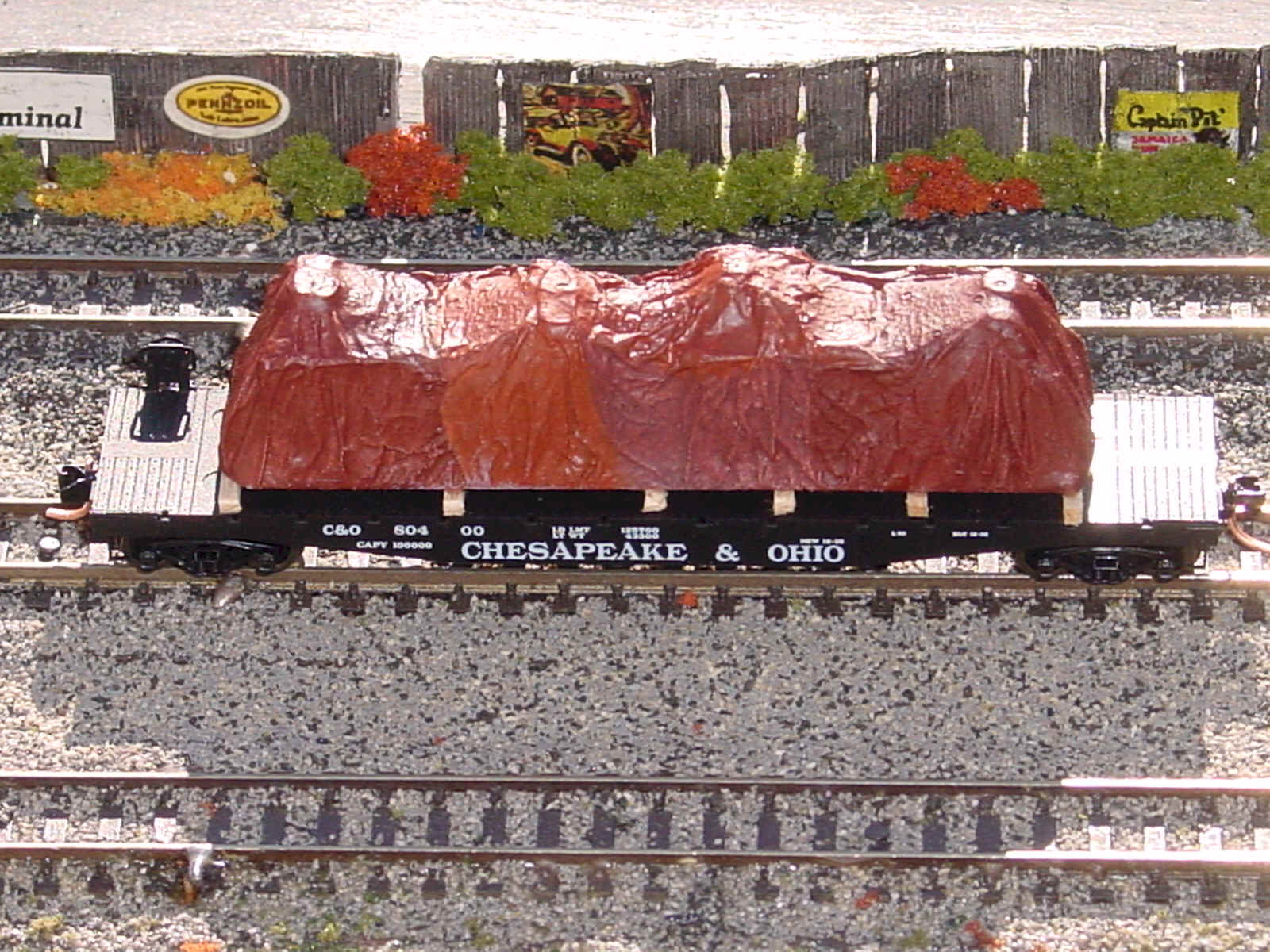
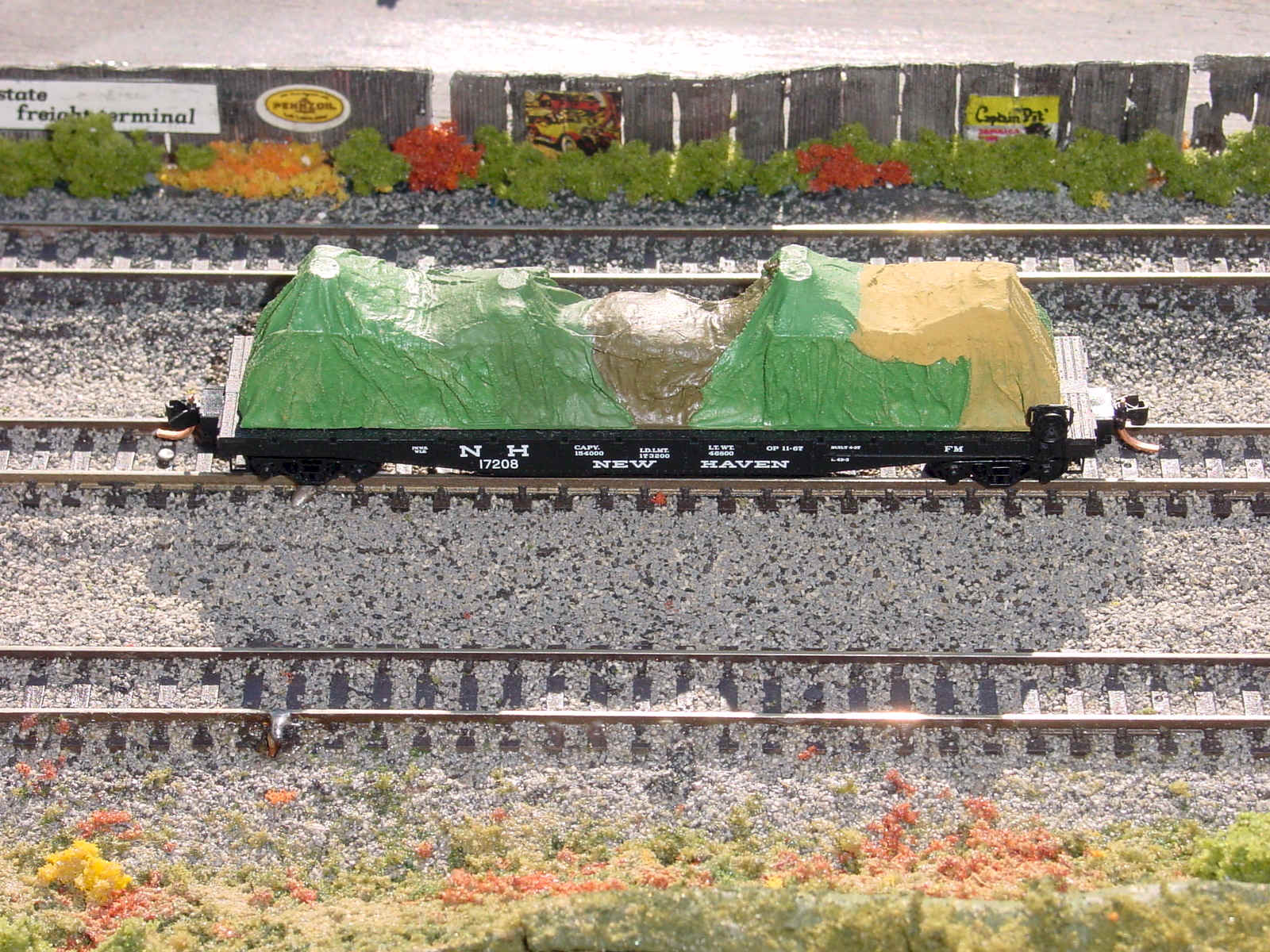
- “General Junk”
(loose, crushed and/or large pieces) scrap metal loads contain a variety of
items. Choose the most obvious
objects: 55-gallon drums,
barrels, wheels, pipes, steel beams, automobile body parts etc.
Make these items the focal point among the rest of the scrap.
Paint the drums and barrels red and white or green and white, the
pipes black, medium green or dark silver.
Automobile parts can be any color desired.
- “General
Junk” is shipped in many ways depending on their size.
It varies from sheared or chopped to single large pieces. Chopped and sheared scrap is usually shipped in heaping
piles or baled, while crushed and loose scrap is just dumped into the
gondola. Due to metal and
steel’s composition and exposure time, it rusts in a variety of “oranges
and browns”. Lighter rust
shows less exposure time, darker rust shows longer exposure time to the
elements. General scrap metal
and steel are usually shipped in open gondolas.
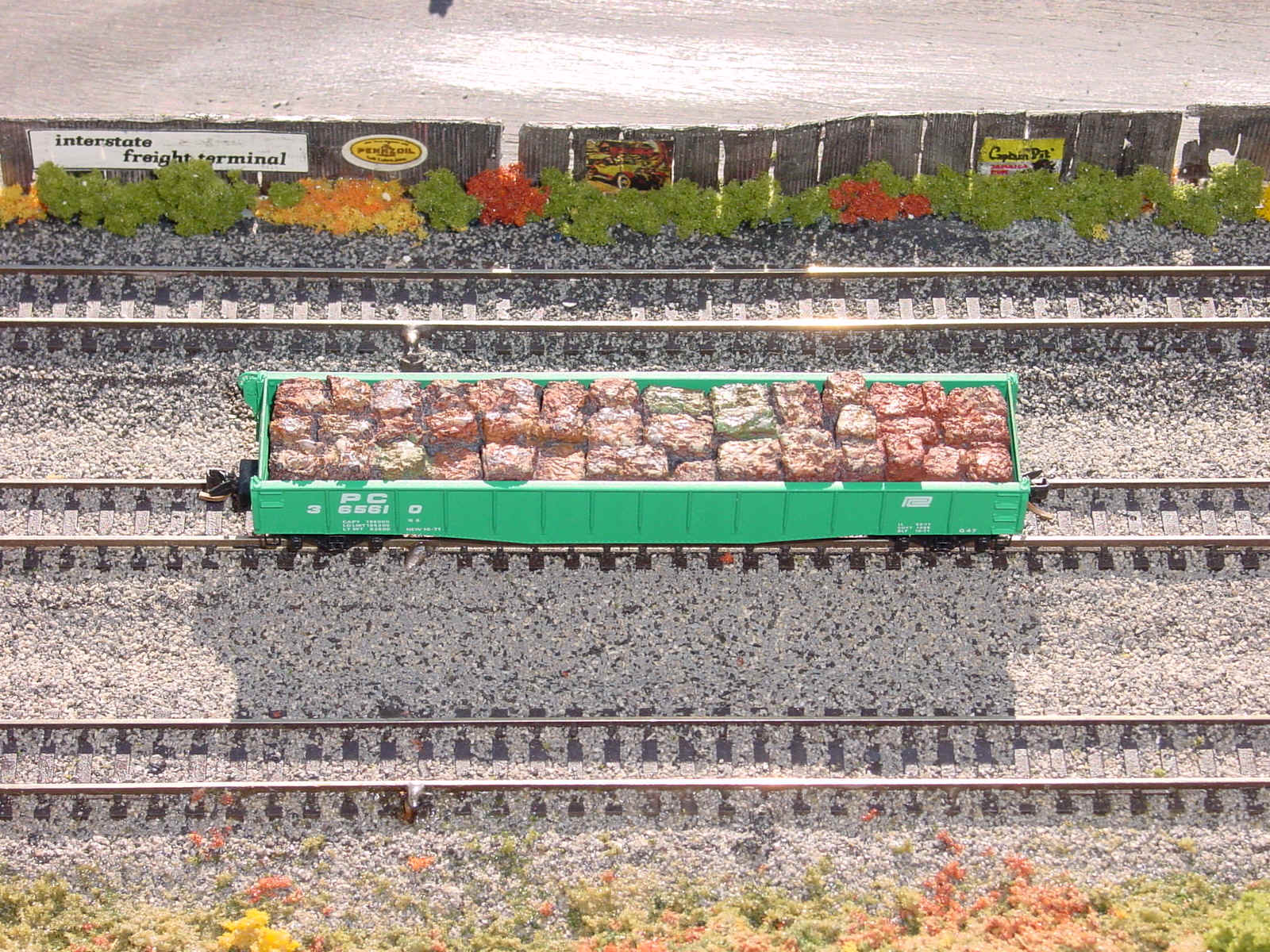
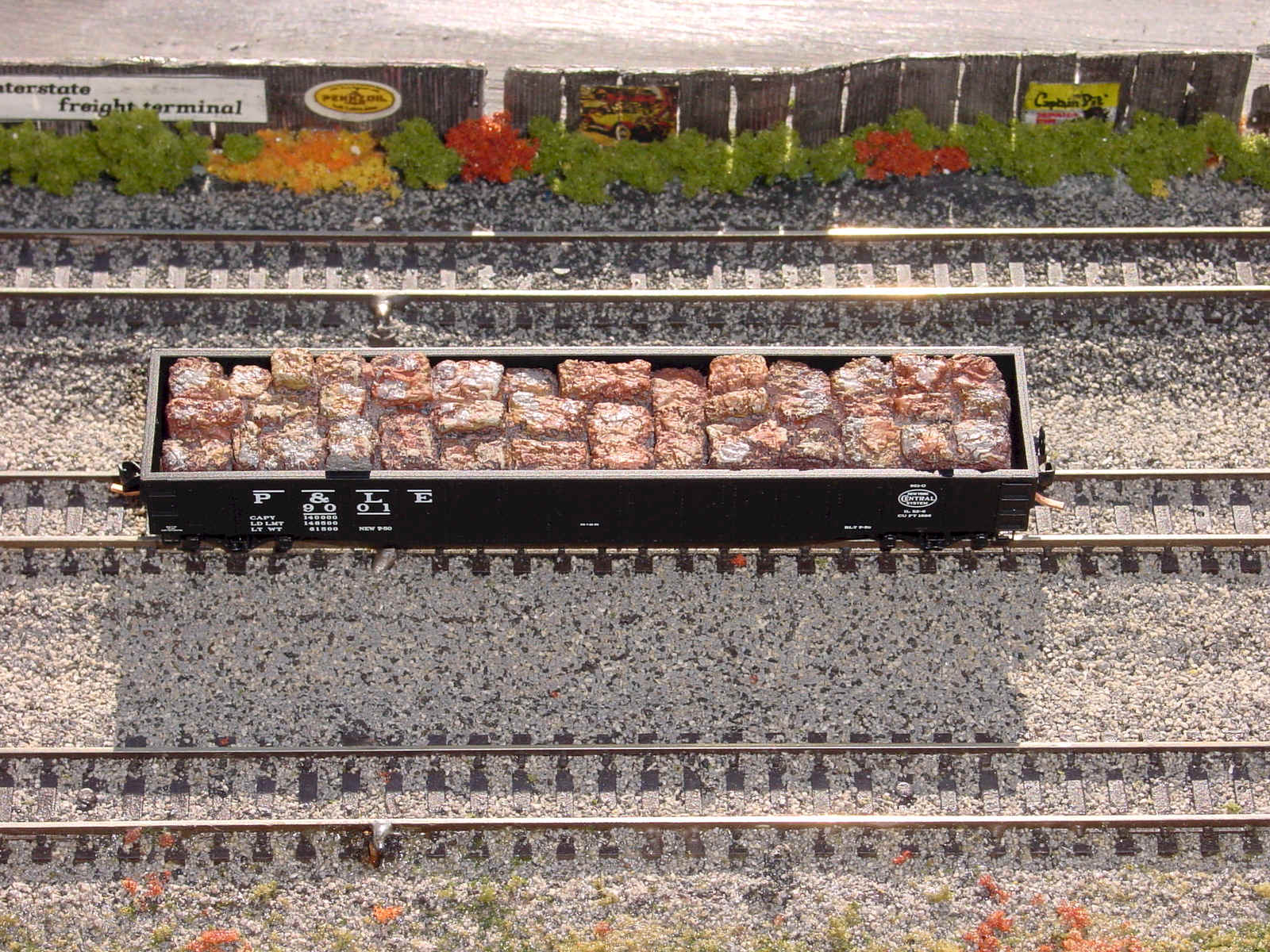
- Automobile bodies are
generally crushed (flattened) whole, piled high, chained down and shipped.
This is usually done by way of flatbed trailers, but some travel by
rail on flatcars or in gondolas.
- Scrap aluminum is
shipped as bales (compacted into squares) or loose piles depending on the
material size. It is almost
always shipped separate from other metals due to the scrap resale value
price. Unpainted or
non-anodized aluminum tends to be a bright silver-color because it does not
rust. It does however oxidize
and become dull and have a tint of white or light, medium or dark gray on
the surface.
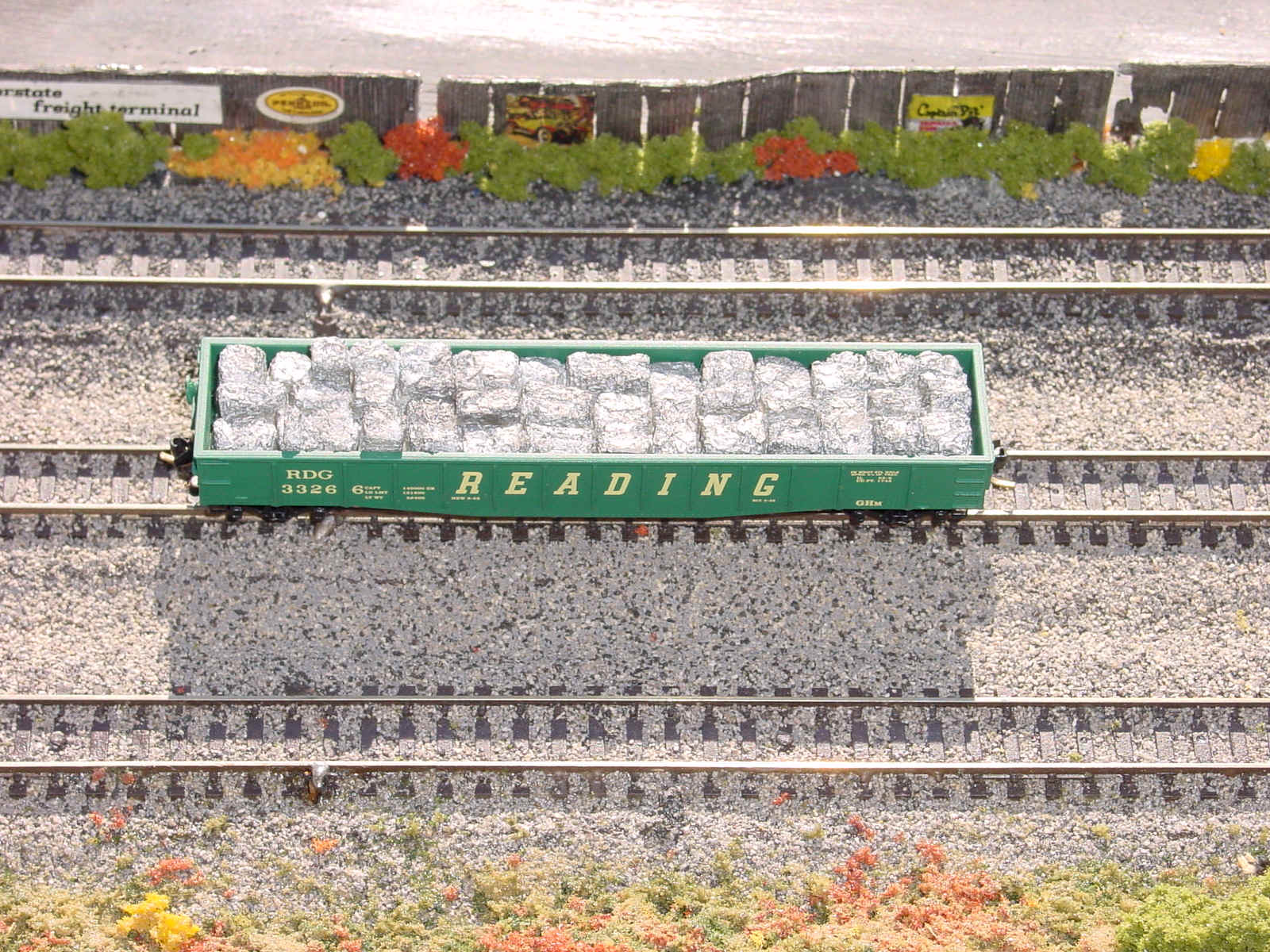
- Scrap stainless steel
is shipped in the same fashion as aluminum and for the same reason.
Stainless steel has a very high scrap resale value price.
Stainless steel does not rust. Unpainted
stainless steel has a dull silver-color.
- Scrap copper, brass and
bronze are shipped in the same fashion as aluminum and stainless steel.
Unprotected copper, brass and bronze tend to turn a greenish-white
when corrosion sets in and/or a dull brownish color.
Think of pennies and statues. These
materials have a very high scrap resale value price.
The photo below represents a load of Baled Scrap Copper and Brass and was
converted from a Hay Brothers Baled Scrap Metal load.
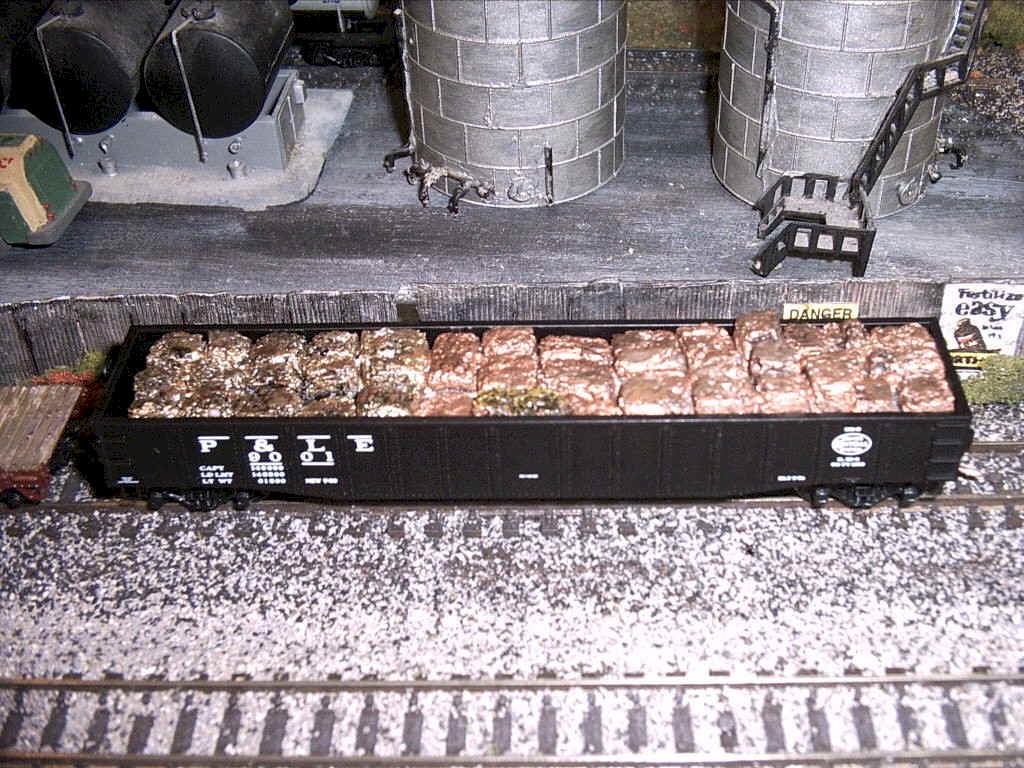
- Recycled cardboard,
paper and newspaper are usually shipped in bales, in 4’ square cardboard
boxes called Tri-Walls or bundles
are piled on pallets and wrapped in plastic.
They are generally shipped in boxcars or under a cover so not to get
wet or litter. Cardboard, paper and newspaper can be a variety of
colors, although light brown, brown and white would probably the most common
due to shipping methods.
- Scrap automobile tires
are either shipped whole or ground up into small pieces.
Whole tires can be shipped in containers, gondolas, stacked in
boxcars or on flatcars. Ground
up tires are shipped in open or covered hoppers or they could also be put in
permanent or recyclable shipping containers and placed in boxcars or
gondolas. Used and weathered
tires tend to appear as various shades of medium to dark gray, not black as
one would think. On open
gondola scrap tire loads, add a few specks of light brown to simulate mud.
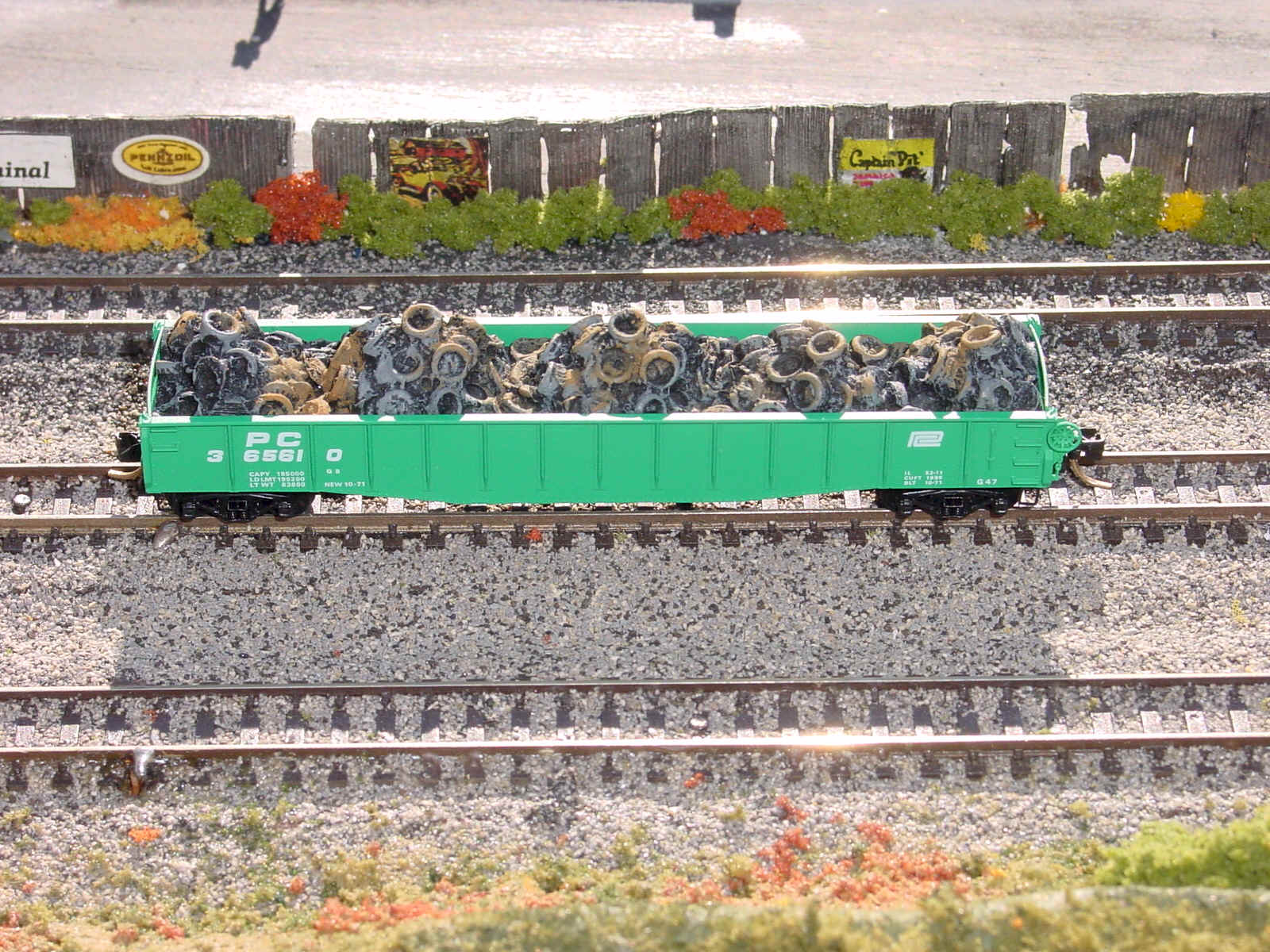
- Household appliances
are usually shipped separately due to their bulkiness and low scrap resale
value. Appliances are usually
crushed and piled or baled together. They
come in a wide variety of colors.
GENERAL
PAINTING AND WEATHERING RECOMMENDATIONS
**ALLOW PAINT TO THOROUGHLY
DRY PRIOR TO EACH STEP**
**SPRAY
FINISHED LOADS WITH A LIGHT COAT DULLCOAT**
- Tarp Loads
- Choose an overall
color or choose several colors to separate tarps.
- Paint the entire tarp
this (these) color(s).
- Lighten or darken
selected color(s) with a dab of white or a darker color.
- Drybrush load in a
top-to-bottom motion with appropriate color(s).
- Add identification
marks (name, numbers, initials etc) to tarp if desired.
- If desired, mix a
black or gray wash and brush over entire load. This will make the creases and lines more visible.
- Allow to dry
thoroughly, about 3 days.
- Baled Scrap Metal and
Steel
- Choose an overall
rust color. (I prefer
Southern
Freight Car Brown or Rust)
- Paint entire load
this color.
- Drybrush load with
various rust and brown colors.
- If desired,
miscellaneously and sparsely dab bales with other colors (red, white,
blue, etc) to simulate the paint from whatever items were baled.
- If desired, mix a
black or gray wash and brush over entire load.
- Allow to dry
thoroughly.
- Baled Aluminum and
Stainless Steel
- Choose an overall
silver color.
- Paint entire load
this color.
- Drybrush entire load
with other silver colors, but not too dark.
- If desired, mix a
black or gray wash and brush over entire load.
- Allow to dry
thoroughly.
- Loose, Crushed and
Large Pieces
- Choose an overall
rust color. (I preferably
Southern
Freight Car Brown or Rust)
- Paint entire load
this color.
- Drybrush load with
various rust and brown colors.
- Choose the obvious
features: 55-gallon drum, barrels, beams, pipes automobile body parts etc.
Miscellaneously and sparsely dab bales with other colors (red, white,
blue, etc) to simulate the paint of the original scrap material.
- If desired, mix a
black or gray wash and brush over entire load.
- Allow to dry
thoroughly.
PREFERRED PAINT COLORS
- Floquil
- Southern Freight Car
Brown (F110175)
- Rail Brown
(F110007)
- Roof Brown
(F110070)
- Rust
(F110073)
- Engine Black
(F110010)
- Grimy Black
(F110013)
- Platinum Mist (bright
silver)
- Reefer White
- Depot Olive (F110044)
- Depot Buff or Armour
Yellow
- Testors
- Steel
(1180)
- Aluminum
- Silver
(1146)
- Red
- Flat Sea Blue
(1172)
- Olive Drab
- Olive Green
- Flat Black
(1370)
- Flat Brown
- Zinc Chromate Yellow
(1184)
These colors are what I typically use, but are not limited to
these colors alone. Use the
real-world as your color guide.
I hope this information helps you better understand how scrap is
separated, loaded and shipped and to create eye-catching tarp and scrap loads
for your open cars. All the information is strictly from my own
personal experience and observations. While
there are many methods in which to accomplish the same outcome, the above
methods work best for me.
Hope you enjoy your loads.
Tom Fredenberg
Apex, North Carolina
------------------------------------------------------------------------------------------------------------------------------
THIS PAGE LAST UPDATED
06-17-2009
Copyright 2009 Hay Brothers
- All rights Reserved








